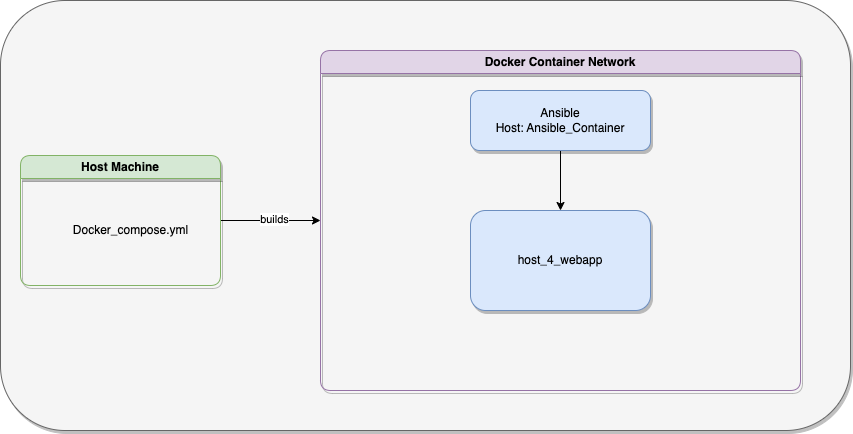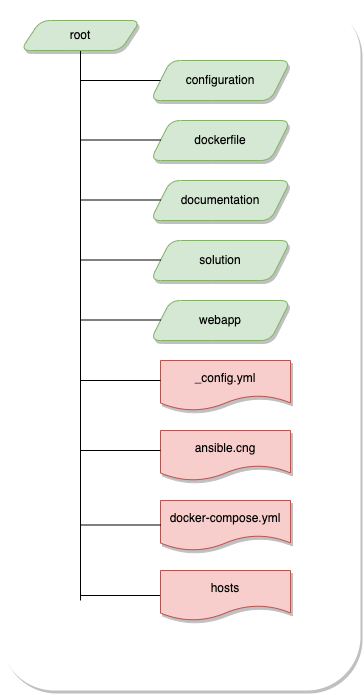Ansible is a tool used for IT automation with following areas of focus.
- Software provisioning
- Application deployment
- configuration management
- Infrastruture orchestration
In this workshop we would like to introduce you to at least two aspects mentioned in the list above, through assignments.
Assignment goals
We want to introduce you to Software provisioning and Application deployment via a simple example of flask web appplication deployment. We have created four assingments for you to go through and get experience in the ansible works.
Software provisioning
For us to deploy a flask web app on to a machine, the machine needs to have flask installed on it. To install flask we need pip installer.
We have dedicated two assignments on how to provision these pre-requisits.
Application deployment
In the next two assingments we want to learn, how to actually deploy the flask web app and start running the app.
Architecture
To create this workshop, we have used two docker containers .
- 1st container will have ansible installed on it. We will run all our assignments on this container
- 2nd container is the target host. This is where the web application will be deployed.
Docker compose is used to configure these two containers and build them.

Folder structure
Files are organized in the following structure in the workshop

configuration
In this folder we have all the assignment files.
The main playbook is at the top level and is named as playbook.yml. A folder is created for each of the assignment with a subfolder named as tasks. In the tasks folder one can find main.yml file associated with respective task.
For e.g.
For Assignment 1 you need to modify main.yml file in folder installpip3/tasks/
These paths are also mentioned in the playbook.yml file.
dockerfiles
In this folder we have docker files which would be used by docker compose to build our docker container.
documentation
We try to keep all our documentation related to the workshop in this folder. Including the presentations.
solutions
We have placed solution to the assignment in this folder
webapp
This folder contains the flask app that will be used to deploy on the docker host
other files
Rest of the top level files are used for configuring this page (_config.yml), ansible configuration (ansible.cfg), docker compose config(docker-compose.yml) and list all the hosts (hosts)
Getting started
Start Docker
To start with make sure docker service is running!
Clone repository
Only once, you clone the repository using the command:
git clone https://github.com/sebivenlo/ESDE-2022-Ansible-workshop.git
Change directory into the folder in which you cloned the repository!
Start docker service containers
Only once, you start the docker services using the command:
docker-compose up --build -d
Be aware that this process can take a while!
Access ansible environment
Only once, you access the ansible docker container by using the command:
docker-compose run ansible
Change directory
Only once, you change directory by using the command:
cd ansible/configuration
Execute ansible-playbook command
Every single time you are ready to test your assigment you run the command:
ansible-playbook playbook.yml --extra-vars "ansible_sudo_pass=workshop"
Solve assignments
Whenever you are working on an assignment in a file named “main.yml”, start by main file called “playbook.yml”. From there you will be directed to the assignments. Every assignment has a goal, task and a link to the documentation. Solutions are easy to find in the documentation.
How we would advice you to work is to first start off with looking at the playbook.yml file in your favorite text editor (Visual Studio Code or for instance Notepad ++). Afterwards, you can choose the assignment to start with by going to the mentioned file. Once you made the assignments you can test it by running the command in the next section
Validate output
Each assignment file mentions how the results can be validated